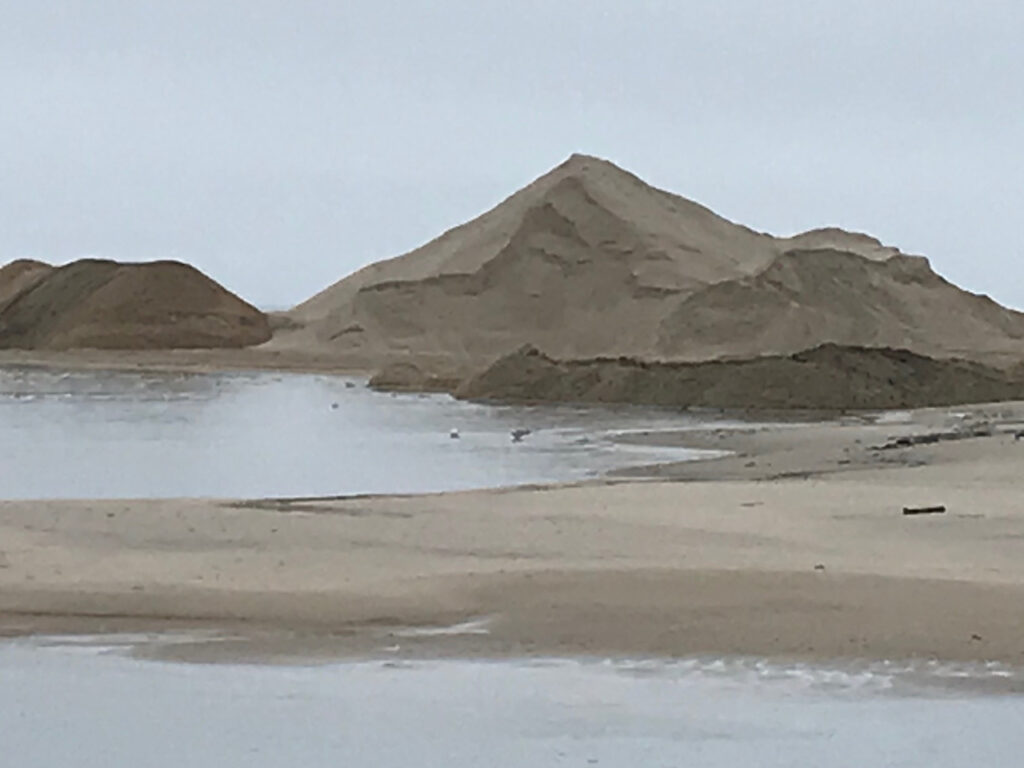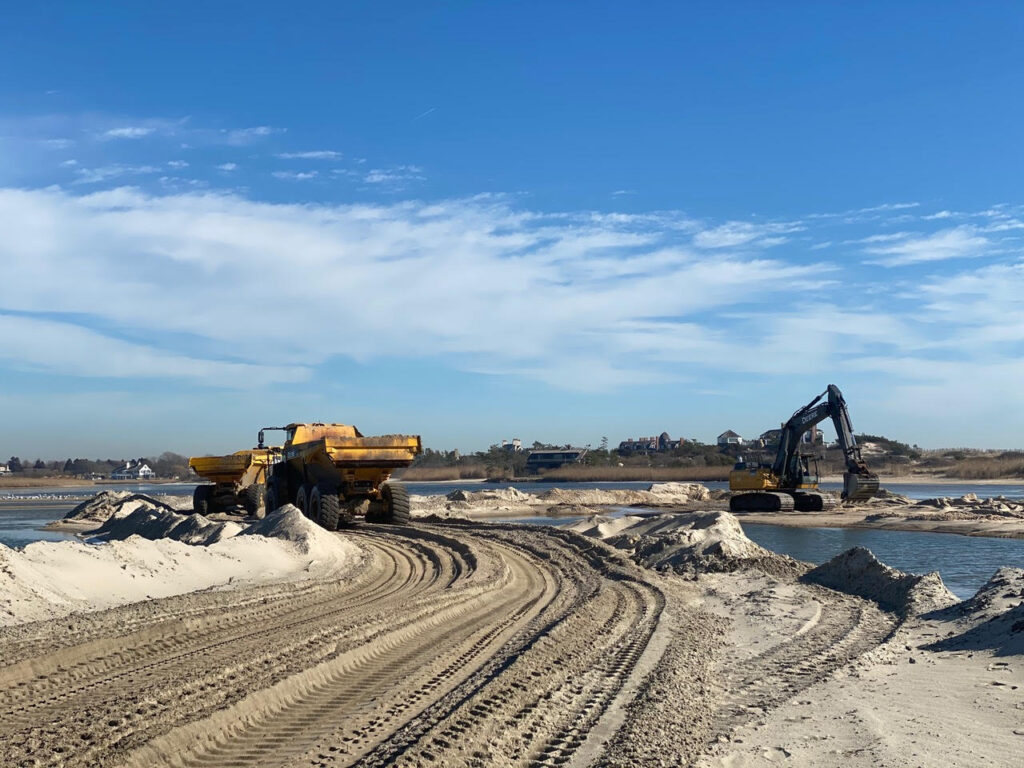Throughout the year the Atlantic surf pounds the beach at Georgica Pond. The tidal surge, spray, wind and waves all act together to deposit sand on the beach, dune and in the pond. Sometimes, all this sand deposition can be undone by a giant Nor’easter and by the following season, new sand has been re-deposited. Suffice it to say, it is a very dynamic system.
(Find more information about the dredging at Georgica Pond in the East Hampton Star.)
Dredging vs. Letting
The East Hampton Town Trustees have overseen maintenance dredging at Georgica Pond for many decades. The most recent dredging permit was received from the NYS DEC, Army Corp of Engineers and the NYS Department of State in January 2018 and covers the next ten years. Friends worked closely with the Trustees to bring all the parties together and obtain the permit. Maintenance dredging is not the same thing as “letting the pond” which is traditionally managed by the Trustees at least twice a year. In colonial days, the Trustees observed Native American’s opening the pond using shells. They continued the practice with farm animals. Today, heavy equipment is used for the “traditional” lettings.

The Trustees’ 10-year dredging permit allows for 15,000 cubic yards of beach sand to be removed from the mouth of the pond and 950 cubic yards to be removed at the entrance to Georgica Cove annually. So how much is a cubic yard? If you can imagine a typical deep freezer, that equals about one cubic yard. Landscapers sometimes use a “yard bag” which can hold a cubic yard.

Once the sand is removed from the pond, it is stockpiled and then redistributed to eroding beaches and dunes on the Atlantic Ocean beach. This requirement ensures that the project does not starve downdrift beaches and that the sand is recirculated in the same system.
One of the DEC’s requirements for the 10-year maintenance dredging permit is for the Trustees to adopt a “Georgica Pond Water Quality Restoration Action Plan.” Friends of Georgica Pond Foundation together with Dr. Christopher Gobler of Stony Brook University have drafted an action plan which is now being reviewed by the Trustees and the Village and Town of East Hampton.
Why dredge?
Annual maintenance dredging helps maintain tidal flushing which is so important to keeping the pond healthy and with less sand at the gut, the Trustee’s traditional letting can be accomplished more easily and be more successful. A deeper pond is also a cooler pond and as global temperatures rise, the health of the pond is jeopardized.

Once all the sand is excavated—the site must be regraded and restored—all by March 31. By spring, it will not be obvious that a major excavation has occurred and the returning rare species such as the piping plover and least tern will not be disturbed. Francis Bock, the Clerk of the East Hampton Town Trustees commented:
“The Trustees are very pleased with the results of this year’s dredging. The contractor excavated high quality sand, which will be returned to our East Hampton ocean beaches. The project was finished mid-February ensuring no conflicts with shorebirds or humans.”
